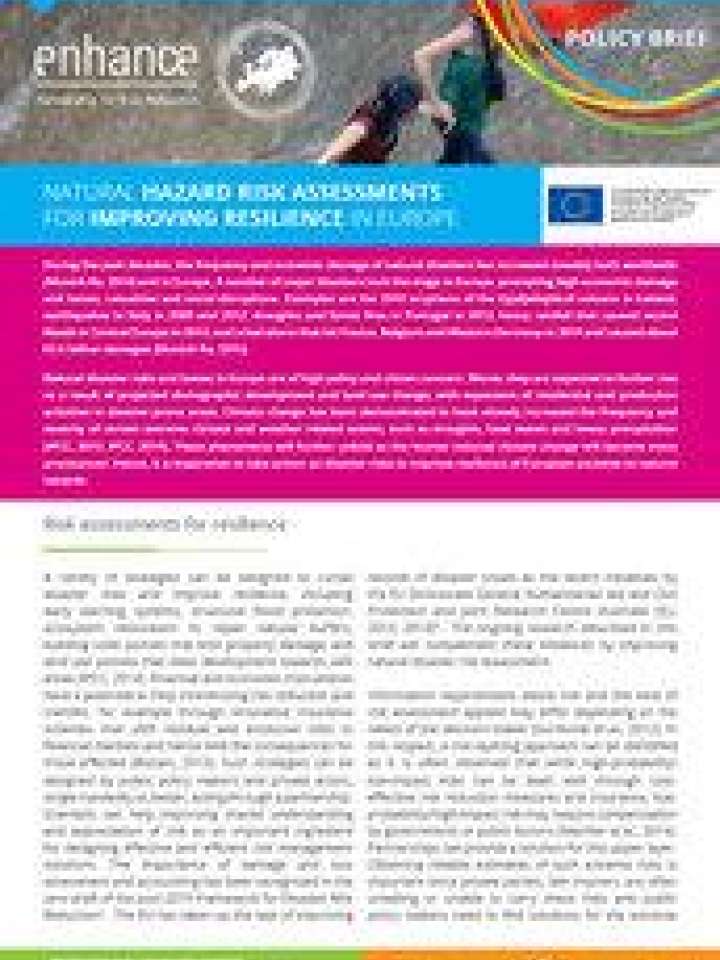Natural hazard risk assessments for improving resilience in Europe
Natural hazard risk assessments are becoming increasingly important for the design of policies that imrpove disaster resilience and promote adaptation to projected increases in natural disaster risks. In the ENHANCE project (see below) new approaches for assessing natural disaster risks are being developed and applied to a rich variety of selected cases of high-profile catastrophic hazards in several European Union (EU) countries.
For instance, by accounting for geographical interdependencies of hazards and risks using statistical methods, like copulas, better-quality estimates of low-probability-high impact risks can be obtained. Furthermore, as the provided case study illustrate in the publication, the kind of risk assessment and its scale depend on how the results are used by decision makers. For example, the EU-wide flood risk assessment informs the design of the EU solidarity fund, while the local assessments of surface water flooding in the United Kingdom (UK) and drought risk in the Jucar provide useful information for local risk management policies, such as insurance and water pricing.
ENHANCE ('Enhancing risk management partnerships for catastrophic natural disasters in Europe') aims at developing and analysing new ways to enhance society's resilience to catastrophic natural hazard impacts. The hazards are related to hear waves, forest fires, flood, drought, storm surge, and volcanic eruptions.
Explore further
